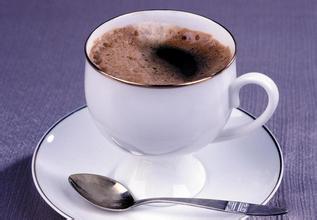Introduction to the types of Yemeni coffee from the origin of Yemeni coffee
Mokha Ismaili: one of the traditional ancient tree species, the market name of a famous coffee from central Yemen is also described as a plant classification of traditional Yemeni coffee with high beverage quality. Planted at a high altitude of more than 6500 feet, the beans are characterized by a more round shape, smaller beans than Madali, thick taste and high complexity. In general, they often outperform Madali. This is the least produced and most expensive Yemeni mocha (Yemeni mocha is no longer cheap). The high-quality Mokayishi Mary is produced in Hirazi (although it is famous as Bani Matar, it is the best-known local reputation in Yemen). The highest elevation in Hirazi is 8000 feet.
Mokha Rimi: produced in the Djebel Remi (also known as Raimi, Rayma) area, the quality is similar to that of Shannani, which is usually slightly fermented, occasionally with surprisingly strong sweet aromas of raisins, and when roasted properly, the coffee beans smell like opening a full-bodied bottle of jam.
Mokha Yafeh: produced in the southern Yemeni province of Yafeh (also known as Yaffe), it belongs to the uncommon Yemenmoka. It is the only "southern flavor" in Yemen, and its production is small. Almost all of it is sold to the neighboring United Arab Principality, and it is rarely seen in the international boutique coffee market.
Arabian mocha: a coffee of single origin in the mountains of Yemen from the southwestern tip of the Arabian Peninsula bordering the Red Sea. The best cultivated coffee in the world is famous for its high viscosity and special acidity of rich wine.
The Yemeni mocha has achieved different genres according to the planting areas, such as the chocolate and sour taste of the MATTARI mocha, and the rough and fragrant taste of the SANANI mocha.
The characteristics of Yemeni coffee:
Despite the high quality and smooth aroma of Yemeni coffee, there is something unsatisfactory, that is, the quality can not be continuously guaranteed, and the classification of its coffee beans is uncertain. Traditionally, the best coffee beans in Yemen come from Mattari, followed by Sharki, followed by Sanani. These coffee beans are low in caffeine. Deep-roasted Yemeni coffee often shows a chocolate-like bitter sweet flavor, affecting today's fancy coffee seasoned with chocolate sauce is also known as the word "mocha". Yemeni coffee has the most unique, rich and fascinating complex smell in the world: red wine, wild game, dried fruit, blueberry, grape, cinnamon, tobacco, sweet spices, log and even chocolate. you can see a variety of adjectives used in Yemenmoka. Just as there are many meanings of mocha, there are various spellings of mocha in English: Moka, Moca and Mocca are all common spellings, and there are as many as four local spellings on sacks and documents of Yemeni coffee: "Mokha", "Makha", "Morkha" and "Mukha", which all have the same meaning.
The taste of Yemeni mocha is complex and changeable, and how to bake the best flavor of Yemeni mocha is a challenge for coffee roasters. Medium and shallow roasting shows sweet fruit, mild, warm sun-fermented flavor; deep baking shows a strong aroma of red wine, bitter sweet chocolate finish.
Flavor: exotic, slightly alcoholic, spicy and exciting, different, must be tasted
Suggested baking method: medium baking
★★★: excellent
Yemeni coffee market:
Yemeni coffee is exported from December to April. The problem in the past has been that coffee from the north was mixed with shoddy stuff before it was shipped from the southern port of Aden. Only coffee shipped from the port of Hodeida can be determined to come from the north. The vast majority of Yemeni coffee is grown under natural conditions, mainly due to the lack of funds for growers.

Important Notice :
前街咖啡 FrontStreet Coffee has moved to new addredd:
FrontStreet Coffee Address: 315,Donghua East Road,GuangZhou
Tel:020 38364473
- Prev

Colombia coffee-producing region Andes foothills
The coffee-producing region of the country is located in the foothills of the Andes, where the climate is mild and the air humid. Colombia has three Cordilleras (sub-mountain system) running north-south, right into the Andes. Coffee is grown along the highlands of these mountains. The terraces provide diversity in climate, which means harvest season throughout the year, with different species at different times.
- Next

Boutique Coffee in Costa Rica Coffee Manor producing area Fire Phoenix Manor Lajas Manor Central Mountain
Costa Rican coffee market: coffee exports account for 25% of Costa Rica's total exports. Costa Rica has also benefited from the establishment of the Central American Institute for Agricultural Research (TurrialbaoftheCentralAmericanAgriculturalResearchlnstitute, referred to as IAAC) in Tarasu, which is an important international research centre. The coffee industry in Costa Rica used to
Related
- Detailed explanation of Jadeite planting Land in Panamanian Jadeite Manor introduction to the grading system of Jadeite competitive bidding, Red bid, Green bid and Rose Summer
- Story of Coffee planting in Brenka region of Costa Rica Stonehenge Manor anaerobic heavy honey treatment of flavor mouth
- What's on the barrel of Blue Mountain Coffee beans?
- Can American coffee also pull flowers? How to use hot American style to pull out a good-looking pattern?
- Can you make a cold extract with coffee beans? What is the right proportion for cold-extracted coffee formula?
- Indonesian PWN Gold Mandrine Coffee Origin Features Flavor How to Chong? Mandolin coffee is American.
- A brief introduction to the flavor characteristics of Brazilian yellow bourbon coffee beans
- What is the effect of different water quality on the flavor of cold-extracted coffee? What kind of water is best for brewing coffee?
- Why do you think of Rose Summer whenever you mention Panamanian coffee?
- Introduction to the characteristics of authentic blue mountain coffee bean producing areas? What is the CIB Coffee Authority in Jamaica?

